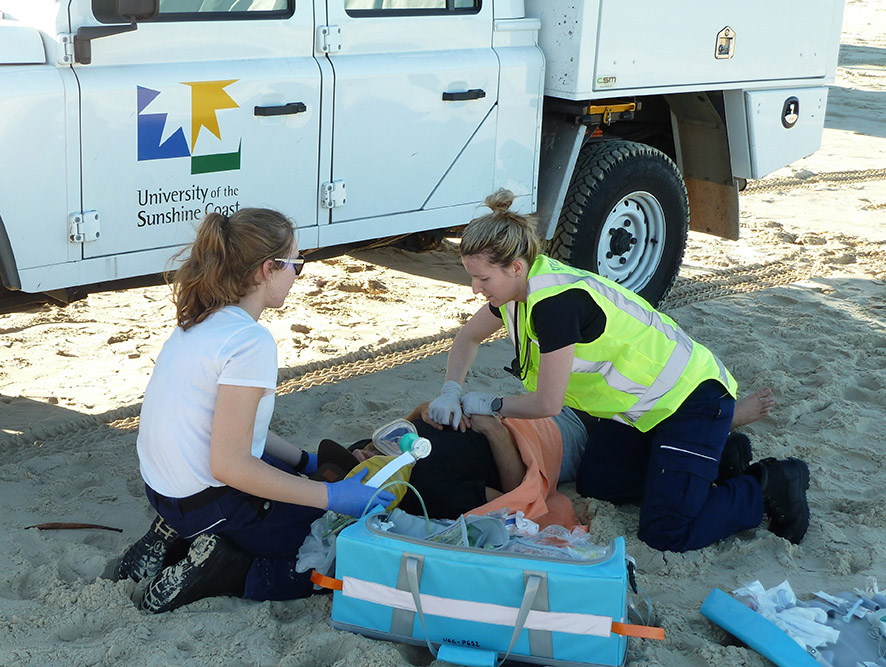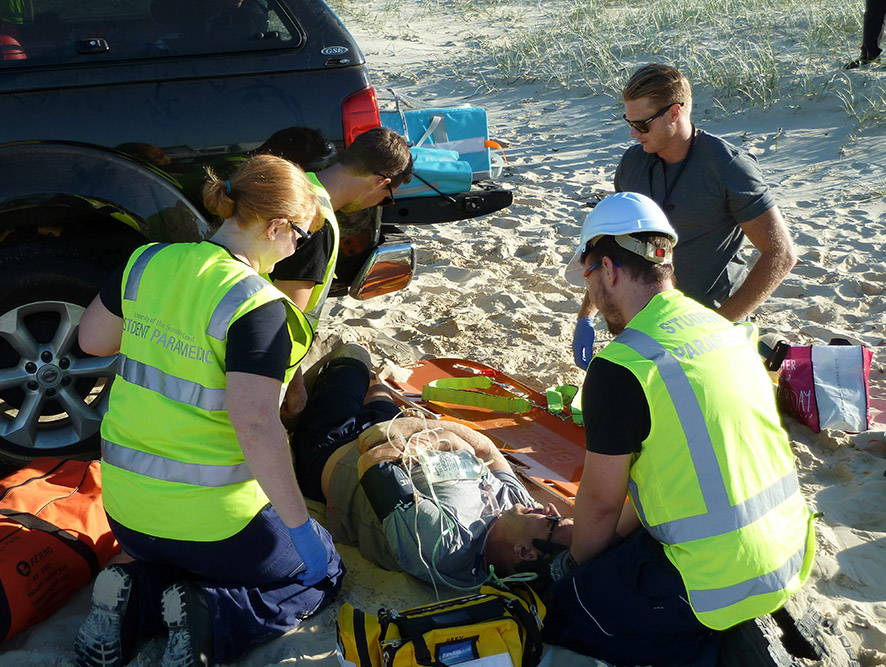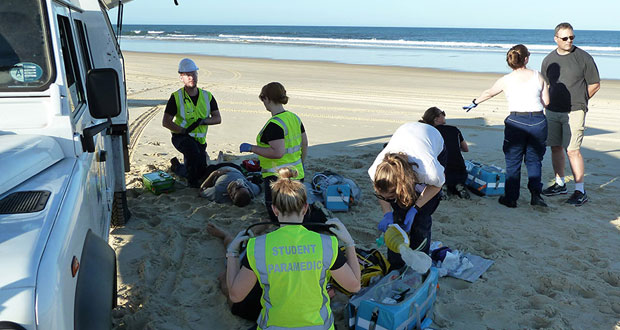Being run over by an automobile, falling into a fire pit, and misadventures while scuba diving on the high seas. These three terrifying scenarios aren't stolen from the pages of iconic Aussie outback horror flicks – or even from the celebrated second season of Survivor (US) set in rural Queensland. They are from the University of the Sunshine Coast's emergency simulation used to train its healthcare professional students.
On the long thin bar of sand – the largest such island of its type in the world – normally called Fraser Island but dubbed Trauma Island for this purpose, USC paramedic students raced to the aid of faux sufferers on the brink of death to administer first aid and begin the healing process.
The course was conducted in partnership with the Queensland Ambulance Service and was a hit with cohorts, according third-year bachelor of paramedic science student Emma Austen.
“Trauma Island took us outside the classroom into a supervised remote setting, allowing us to use medical equipment and act as qualified paramedics on a real job,” Austen recounted.

USC paramedics students put their classroom learnings into practice on Trauma Island. Photo: USC
Why Fraser Island? Aside from its natural and largely untouched rugged sylvan beauty, the locale provides the perfect spot for a range of simulations that challenge perspicacity and fortitude. Here is associate professor of paramedic sciences Bill Lord.
“Fraser Island is a very challenging work environment," Lord professed. "You are trying to retrieve people from areas where there is only 4-wheel-drive access, and move and treat patients on sand.
“As the students experienced, this increases the complexity of providing care, especially compared with an urban setting.
“On Fraser Island, immediate back-up isn’t available, so paramedics have to be resourceful and may have to provide prolonged care until they can arrange to ferry or airlift patients off the island.”

Highly prized on-the-job skills are learnt on Trauma Island. Photo: USC
Email [email protected]
 Aged Care Insite Australia's number one aged care news source
Aged Care Insite Australia's number one aged care news source

